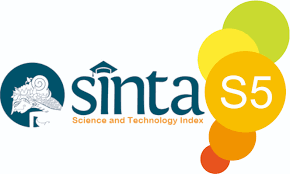Bibliometric Analysis of Integrating Blue Curriculum with Technology: A Sustainable Approach to Education
Keywords:
Blue Curriculum, Ocean Literacy, Technology IntegrationAbstract
This study aims to investigate the global research landscape on integrating Blue Curriculum with technology to promote sustainable education. The study uses bibliometric analysis methods with the help of VOSviewer and RStudio applications. By analyzing publications from 2000 to 2024 sourced from the Scopus and Web of Science database, the study identifies trends, influential authors, institutions, and research hotspots. The results show a steady growth in research output, with significant contributions from journals such as Sustainability, Marine Policy, and Environmental Education Research. Keyword co-occurrence analysis highlights clusters related to the blue economy, technology integration, and interdisciplinary approaches, reflecting strong alignment with the Sustainable Development Goals (SDGs), particularly SDG 4 (Quality Education) and SDG 14 (Life Below Water). The findings reveal increasing international collaboration and highlight emerging themes such as gamification, virtual reality, and AI-based learning tools in ocean literacy. However, challenges such as the digital divide and limited access to resources in certain regions remain. This study provides recommendations for local curriculum development, long-term impact studies, and interdisciplinary research to address these challenges and enhance technology integration in sustainability education. This analysis provides a roadmap for future research and underscores the potential of the Blue Curriculum to reshape global education for sustainability.
References
[2] Annan-Diab, F., and Molinari, C. (2017). Interdisciplinarity: Practical approach to advancing education for sustainability and for the Sustainable Development Goals. The International Journal of Management Education, 15(2), 73-83.
[3] Mokos, M., Cheimonopoulou, M., Koulouri, P., Previati, M., Realdon, G., Santoro, F., ... and Ioakeimidis, C. (2021). The Importance of Ocean Literacy in the Mediterranean Region—Steps Towards Blue Sustainability. Ocean Literacy: Understanding the Ocean, 197-240.
[4] O'Brien, M., Freitas, C., Venzo, P., and Francis, P. (2023). Fostering ocean literacy through informal marine education programs. Marine Pollution Bulletin, 193, 115208.
[5] Fauville, G., Voşki, A., Mado, M., Bailenson, J. N., and Lantz-Andersson, A. (2024). Underwater virtual reality for marine education and ocean literacy: technological and psychological potentials. Environmental Education Research, 1-25.
[6] Su, C. H., and Cheng, C. H. (2015). A mobile gamification learning system for improving the learning motivation and achievements. Journal of Computer Assisted Learning, 31(3), 268-286.
[7] Mohamad, S. N. M., Sazali, N. S. S., and Salleh, M. A. M. (2018). Gamification approach in education to increase learning engagement. International Journal of Humanities, Arts and Social Sciences, 4(1), 22.
[8] Maghsudi, S., Lan, A., Xu, J., and van Der Schaar, M. (2021). Personalized education in the artificial intelligence era: what to expect next. IEEE Signal Processing Magazine, 38(3), 37-50.
[9] Pratama, M. P., Sampelolo, R., and Lura, H. (2023). Revolutionizing education: harnessing the power of artificial intelligence for personalized learning. Klasikal: Journal of education, language teaching and science, 5(2), 350-357.
[10] Kelly, R., Evans, K., Alexander, K., Bettiol, S., Corney, S., Cullen-Knox, C., ... and Pecl, G. T. (2021). Connecting to the oceans: supporting ocean literacy and public engagement. Reviews in fish biology and fisheries, 1-21.
[11] Cao, W., Zhou, Y., Li, R., Li, X., and Zhang, H. (2021). Monitoring long-term annual urban expansion (1986–2017) in the largest archipelago of China. Science of The Total Environment, 776, 146015.
[12] Keaveney, S., Keogh, C., Gutierrez-Heredia, L., and Reynaud, E. G. (2016). Applications for advanced 3D imaging, modelling, and printing techniques for the biological sciences. 2016 22nd international conference on virtual system and multimedia (VSMM), 2016, 1-8.
[13] Liu, L., Oh, H., Zhang, L., Fang, T., Huang, M., Hao, Y., ... and Ying, F. (2023). A study of children’s learning and play using an underwater robot construction kit. International Journal of Technology and Design Education, 33(2), 317-336.
[14] Costa, D., Screpanti, L., and Scaradozzi, D. (2023). Disseminating STEM subjects and ocean literacy through a bioinspired toolkit. Biomimetics, 8(2), 161.
[15] Cretella, A., Scherer, C., and Holm, P. (2023). Tasting the ocean: How to increase ocean literacy using seafood heritage with a visceral approach. Marine Policy, 149, 105476.
[16] Paul, S. A., Wilson, A. M. W., Cachimo, R., and Riddell, M. A. (2016). Piloting participatory smartphone mapping of intertidal fishing grounds and resources in northern Mozambique: Opportunities and future directions. Ocean and Coastal Management, 134, 79-92
[17] Boyd, D., and Hirst, N. (2018). Recognising beach kindy as a pedagogical approach for critical agents of change within early childhood education. World Sustainability Series, 2018, 877–892.











